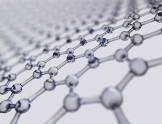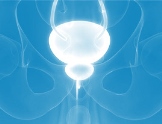Methodology: Liquid Chromatography-Tandem Mass Spectrometry (LC-MS/MS)
Detection index 1: Epinephrine (E), Norepinephrine (NE), Dopamine (DA), Methoxyephrine (MN), Methoxynorepinephrine (NMN), 3-Methoxytyramine ( 3-MT)
Detection index 1: Methoxyephrine (MN), Methoxynorepinephrine (NMN), 3-Methoxytyramine (3-MT)
Sample type: plasma, urine
Specification: 96 servings/box
Clinical significance
Pheochromocytoma and paraganglioma (PPGL) are rare neuroendocrine tumors that mainly occur in the adrenal medulla (80%-85%) or paraspinal sympathetic chain ganglia (15%-20%). The adrenal medulla and ganglia are part of the sympathetic nervous system from which embryonic nerve sheaths originate. These neuroendocrine cells synthesize and secrete catecholamines (Catecholamines, CAs), including epinephrine, norepinephrine, and a small amount of dopamine. The risk of misdiagnosis and missed diagnosis of PPGL is high. Cardiovascular and cerebrovascular emergencies are prone to occur during treatment. Therefore, more accurate and objective test indicators are needed to assist clinical diagnosis and treatment. Through the detection of blood epinephrine, norepinephrine, dopamine, metanephrine, norepinephrine and 3 methoxy tyramine total 6 substances, auxiliary diagnosis of PPGL, with high accuracy and specificity.
Highly recommended; high-quality evidence recommends that the first biochemical test for the diagnosis of PPGL is to measure free MNs in blood or urinary MNs concentration (strong recommendation is strong evidence). Secondly, the concentration of NE, E, DA in blood or urine can be detected to help diagnose. ---- "Expert consensus on the diagnosis and treatment of pheochromocytoma and paraganglioma 2016"
Target population
For the target population of CAs testing, we recommend testing for patients with the following clinical manifestations. Patients who do not meet the following conditions but have testing needs can also be screened for this item. The specific conditions need to be further considered in the clinic.
a) Patients with paroxysmal hypertension;
b) PPGL triad of paroxysmal headache, palpitations, and hyperhidrosis;
c) Patients with occasional adrenal space-occupying lesions;
d) Sudden increase in blood pressure caused by anesthesia, surgery, angiography, etc.;
e) Patients with orthostatic hypotension;
f) Patients with a family history of PPGL or a family history of PPGL-related genetic syndromes;
g) Patients with refractory hypertension;
h) Young hypertensive patients (<30 years old);
i) Others: hyperglycemia, weight loss, fatty liver, hypercalcemia, etc.
Catecholamines (CAs) and pheochromocytoma and paraganglioma (PPGL)
Catecholamines (CAs) include epinephrine (E), norepinephrine (NE) and dopamine (DA), all of which are derived from tyrosine. Catecholamines are mainly secreted by the adrenal glands and some sympathetic neuron chromaffin cells in the human body. They are an important class of neurotransmitters and hormones. They play an important role in the signal transduction of the brain and nervous system and can improve The nervous system's reaction speed enhances the body's ability to adapt to the environment. In addition, catecholamines also have extensive and important regulatory effects on the physiological functions of the human body’s cardiovascular system, endocrine glands, kidneys, muscles and other tissues and organs, so they are closely related to human health.
Pheochromocytoma and paraganglioma (pheochromocytoma and paraganglioma, PPGL) are tumors that originate in the adrenal medulla (PCC) or the adrenal diplomatic nerve chain (PGL), respectively. PCC accounts for 80% ~ 85%, and PGL accounts for 15% ~ 20%, the two are collectively referred to as PPGL. According to reports, the prevalence of PPGL in general hypertension clinics is 0.2% ~ 0.6%. It mainly synthesizes and secretes a large amount of catecholamines (CA). The release of catecholamines can cause persistent or paroxysmal episodes of hypertension in patients, causing severe heart, brain, and renal vascular damage, and even life-threatening. Especially for those patients who have not correctly diagnosed and taken corresponding preoperative treatment before the operation, the life safety of the patients will be seriously threatened under the stress of the operation. However, if the diagnosis can be made early and correct, the disease can be cured by surgery. Therefore, the early and correct diagnosis of pheochromocytoma has very important clinical significance.






